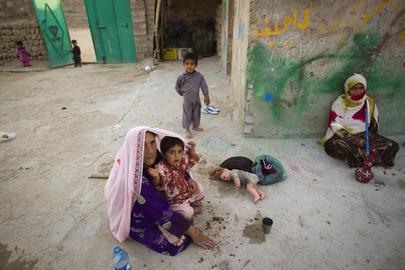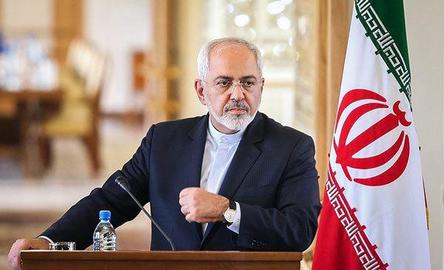What is the magnitude of poverty in Iran? It’s an important question, but since the 1979 Islamic Revolution, there have been no reliable and comprehensive statistics to allow for objective answers, and for the most part knowledge about the situation has been shaped by conjecture and anecdotes. But in early December 2018, the Iranian parliament’s Research Center published a pioneering and comprehensive report on absolute poverty in the 31 provinces of Iran for the Iranian calendar year of 1395 (March 20, 2016-March 20, 2017).
The figures give considerable cause for concern.
Absolute Poverty
A report published by the United Nations in 1995 defines absolute poverty as “a condition characterized by severe deprivation of basic human needs, including food, safe drinking water, sanitation facilities, health, shelter, education and information. It depends not only on income but also on access to social services.”
The World Bank has established a more quantitative standard. It sets the poverty line at a daily income of US$1.9 at 2010 prices, which translated to over $2 in 2016 prices. This translates to more than US$2 in 2016 prices, or more than US$600 per month.
In 2016, US$1 was worth 3,500 Iranian tomans, so the poverty line in Iran stood at around 2.1 million tomans per month. This number varied in different localities after being adjusted for purchasing power.
The first article in this series introduced the concepts, methods, and statistical data IranWire used to arrive at a general picture of poverty in Iran at a national level. In this article, we explore poverty in the southern province of Hormozgan: the fifth poorest province in Iran.
The Persian Gulf’s Jewel of Poverty
Hormozgan is a perfect example of the cruel ironies of geography. The province sits on top of the strategically-important Strait of Hormuz, through which 30 percent of the world’s crude oil flows. A short distance to the south is the cash-rich Dubai, one of the fastest growing economies in the world. And yet Hormozgan is the fifth poorest province in Iran where, according to the Iranian parliament’s Research Center, close to 30 percent of the population or around 500 thousand people live under the absolute poverty line and cannot afford to procure 2,100 calories of food energy per day: the minimum necessary to ward off malnutrition and starvation.
According to the latest employment figures from the Statistical Center of Iran, in 2017 unemployment in Hormozgan was relatively low and stood at about nine percent, the third lowest in Iran. Nevertheless, the labor force participation rate — the sum of all employed workers divided by the working age population — in Hormozgan was relatively low, and the proportion of those in employment stood at around 40 percent of the working age population.
Inflation, compared to other Iranian provinces, also looks reasonable at first glance. In November 2018 the rate of inflation in Hormozgan was only 142.9 percent whereas the average nationwide rate was 147.8 percent.
But though the province's employment and inflation figures look comparatively promising, the situation on the ground in Hormozgan is dismal.
Urban Poverty
Poverty in urban areas of Hormozgan is markedly higher than in the rural zones. Around 55 percent of the province’s population live in urban areas but so do almost 63 percent of the poor: close to 312,000 people in total. In other words, one in three of the urban inhabitants of Hormozgan live under the absolute poverty line.
In 2016, the urban poverty line stood at around 410 thousand tomans ($98) for one person and 1.314 million tomans ($312) for a family of five - rounded up from the average size of 4.76 for an urban household). Adjusted for inflation, in November 2018 the absolute urban poverty line stood at around 610 thousand tomans ($145) for one person and close to two million tomans ($463) for a household.
Rural Poverty
Both the total number and proportion of poor Iranians in rural Hormozgan are lower compared than in the province’s urban areas. But this does not mean rural poverty is necessarily low.
The poverty line in rural areas is almost half of what it is in urban Hormozgan. In 2016, the absolute rural poverty line was almost 234 thousand tomans ($56) for one person and over 631 thousand tomans ($150) for a family of four. Again adjusted for inflation, in November 2018 the absolute rural poverty line stood at around 330,000 tomans ($78) for one person and less than 900,000 tomans ($211) for a household. In other words, around a quarter of the rural population - close to 42 thousand households, or around 185 thousand villagers - also live beneath the absolute poverty line.
Read the full Poverty in Iran series:
Poverty in Iran: An Introduction
Poverty in Iran: West Azerbaijan
Poverty in Iran: Sistan and Baluchistan
Related Coverage:
Revealed: Absolute Poverty in Iran, December 7, 2018
Could a 20% Salary Increase Help State Employees?, December 5, 2018
Iran Rushing Toward 30 Percent Inflation, November 27, 2018
, October 30, 2018
Runaway Inflation and the Nationwide Trucker Strike, October 4, 2018
Families and Fishermen Lose Out as Prices Rise, October 1, 2018
Living on the Margins in Iran: Chabahar and the Province of Sistan and Baluchistan, September 6, 2018
Living on the Margins in Iran: Bandar Abbas and Hormozgan Province, August 24, 2018
Living on the Margins in Iran: An Introduction, July 11, 2018
visit the accountability section
In this section of Iran Wire, you can contact the officials and launch your campaign for various problems

























comments